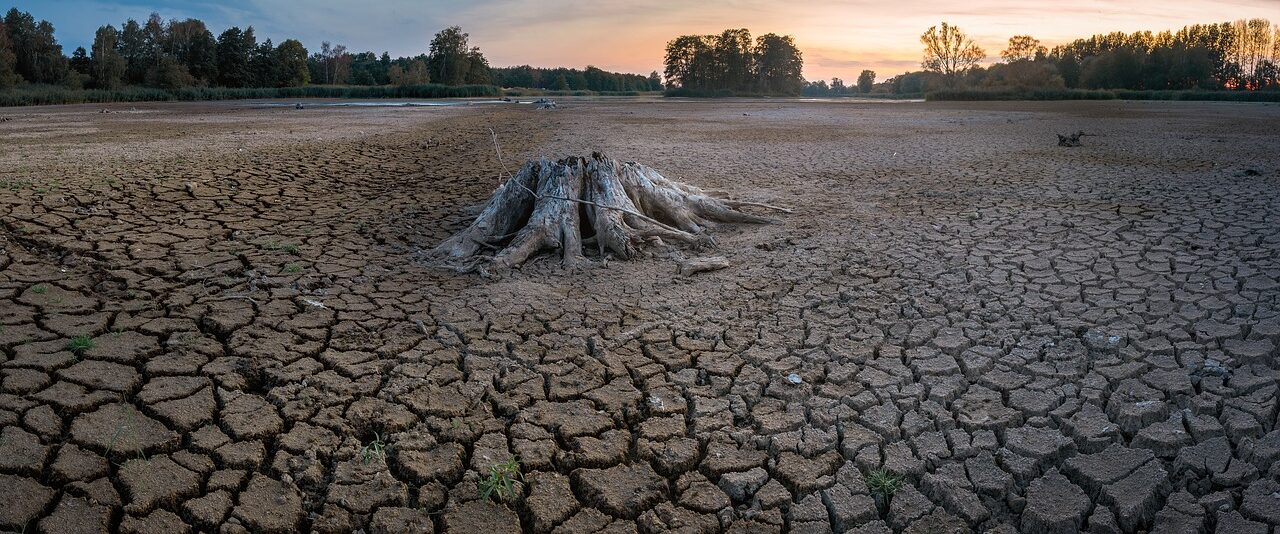Written by: Joseph Opoku Gakpo
Though climate change is likely to exacerbate food and water shortages for poor countries, increase migration, precipitate new health challenges and reduce biodiversity, biotechnology could help lessen the shock, says a new United States intelligence report.
The report warns that the physical effects of climate change will intensify over the next two decades, especially in the 2030s. Governments in every region will be strained as they respond to the impacts and associated environmental degradation.
But the impact will be particularly acute in Africa, Asia and the Middle East, where governments are already weak, stressed or fragile. Wealthy countries will also increasingly face environmental costs and disasters that challenge the ability and resources of their governments to respond, potentially undermining public trust.
The 156-page “Global Trends 2040: A More Contested World” report, produced by the National Intelligence Council (NIC), predicts there will be more extreme storms, droughts and floods, as well as melting glaciers and ice caps. Rising sea levels will also accompany rising temperatures. The impact will disproportionately fall on the developing world and poorer regions and intersect with environmental degradation to create new vulnerabilities and exacerbate existing risks to economic prosperity, food, water, health and energy security.
However, large scale ecological interventions through biotechnology, reforestation and ocean engineering will help manipulate and rescue damaged environments, which could result in making barren or depleted lands productive and mitigate human-induced and natural threats to the environment.
The physical impacts of a warmer world, combined with environmental degradation, are likely to lead to an array of human security challenges that will compound one another in coming years, the report cautions. As extreme events become more intense and more frequent, societies may struggle to recover from one event before the next one hits.
Climate change will force almost all states and societies to adapt to a warmer planet. Governments, societies and the private sector are likely to expand adaptation and resilience measures, but parts of the population will still be left behind. On the current path, it is probable that within the next 20 years global warming will surpass 1.5°C while heading toward 2°C, possibly by mid-century. Cumulative emissions already in the atmosphere will drive temperature increases in the next two decades even if emissions were to reach net zero immediately.
Outside the Arctic, the fastest warming is projected to occur in central and eastern North America, central Europe, the Mediterranean region (including southern Europe, northern Africa and the Near East), western and central Asia and southern Africa. The tropics especially are expected to experience widespread extreme heatwaves.
Warming temperatures are likely to create the atmospheric conditions for more intense and in some cases more frequent natural disasters, including stronger hurricane-strength storms, coastal flooding, storm surges and droughts. Traditional weather patterns are also changing. For example, dry areas are expected to become drier, wet areas will become wetter and precipitation will be less frequent but more intense in some areas.
During the next two decades, population growth, rapid urbanization and poor land and resource management will increasingly intersect with and exacerbate climate change effects in many countries, particularly in the developing world. With coastal cities growing, more people than ever will be threatened by a combination of storm surges and sea level rise that worsen existing coastal erosion. The expansion and unsustainable management of agriculture and forestry practices degrade land, and both contribute to and intensify the effects of climate change.
Food, water and health impacts
Changing precipitation patterns, rising temperatures, increased extreme weather events and saltwater intrusion into soil and water systems from rising seas and storm surges are likely to exacerbate food and water insecurity in some countries during the next two decades. Regions that remain dependent on rain-fed agriculture will be particularly vulnerable, such as sub-Saharan Africa, Central America, some areas of Argentina and Brazil, parts of the Andean region, South Asia and Australia. By contrast, some higher latitude regions such as Canada, northern Europe and Russia may benefit from global warming by lengthened growing seasons.
Low- and lower-middle-income countries will also be at greater risk for food insecurity as they urbanize. They currently produce only one-third of the food per capita that upper-middle- and high-income countries produce, leaving many dependent on imports. Food distribution systems in these countries are under greater strain and are less resilient to shocks such as droughts or floods, and urban households lack access to subsistence farming opportunities. Environmental events are likely to have a greater human impact on newly urbanizing regions where dense populations are located on coasts and in other vulnerable areas, but protective infrastructure — most importantly flood control and storm-hardy housing — has not kept pace.
Fisheries are also under threat from severe overfishing that climate change will further stress through oxygen depletion, rapid warming and ocean acidification. Fishermen will have to go further to catch fewer and smaller fish, potentially venturing into the territorial waters of other countries. In addition, warming ocean temperatures threaten to kill many more coral reefs — they have already declined by 30 to 50 percent — and at 1.5°C warming, they could decline by 70 to 90 percent, further threatening fishing and tourism industries.
Decreased water, poor air and food quality and changes in disease vectors and water-borne pathogens all threaten human life. In addition, extreme weather and disasters often kill people and disrupt health infrastructure and prevent access to care. Climate change is expected to change the geographic range and in some cases frequency of disease outbreaks affecting humans, animals and plants, including those that are vector-borne, such as West Nile disease, malaria and dengue; waterborne, like cholera; airborne, such as influenza and hantavirus; and food-borne, such as salmonella.
Shrinking biodiversity
Biodiversity, which is the variability among all living organisms, is declining faster than at any point in human history, risking food and health security and undermining global resilience. Warming temperatures are likely to lead to the extinction of plants and animals that can no longer survive in their traditional habitats or shift quickly to new locations. Warming temperatures will also encourage the spread of invasive species that choke out native organisms. Climate change probably will exacerbate migration as sea level rise or extreme heat makes certain places permanently uninhabitable, although mainly after 2040, possibly causing permanent migration and movement to other regions.
Technology to the rescue?
Climate change, disease, financial crises and technology disruptions are likely to manifest more frequently and intensely in almost every region and country. These challenges, which often lack a direct human agent or perpetrator, will produce widespread strains on societies as well as shocks that could be catastrophic.
Technology will offer the potential to mitigate some of these problems but will also create new challenges, such as job displacement. During the next two decades, the pace and reach of technological developments are likely to increase ever faster, transforming a range of human experiences and capabilities while also creating new tensions and disruptions within and between societies, industries and states. State and nonstate rivals will vie for leadership and dominance in science and technology with potentially cascading risks and implications for economic, military and societal security.
There will be increased emphasis on mitigating greenhouse gas emissions to achieve net zero with new energy technologies and carbon dioxide removal techniques to meet the Paris Agreement goal of limiting warming to 1.5 degrees Celsius. However, as the world gets closer to exceeding 1.5°C — probably within the next 20 years — calls will increase for geoengineering research and possible deployment to cool the planet, despite possibly dire consequences.
The NIC report is published every four years to assess key trends and uncertainties that will shape the United States and the world at large over the next two decades and guide policy makers. However, it does represent the official, coordinated view of the US intelligence community nor US policy.

This story originally appeared in the Cornell Alliance for Science and is republished here as part of Covering Climate Now, a global journalism collaboration strengthening coverage of the climate story.







